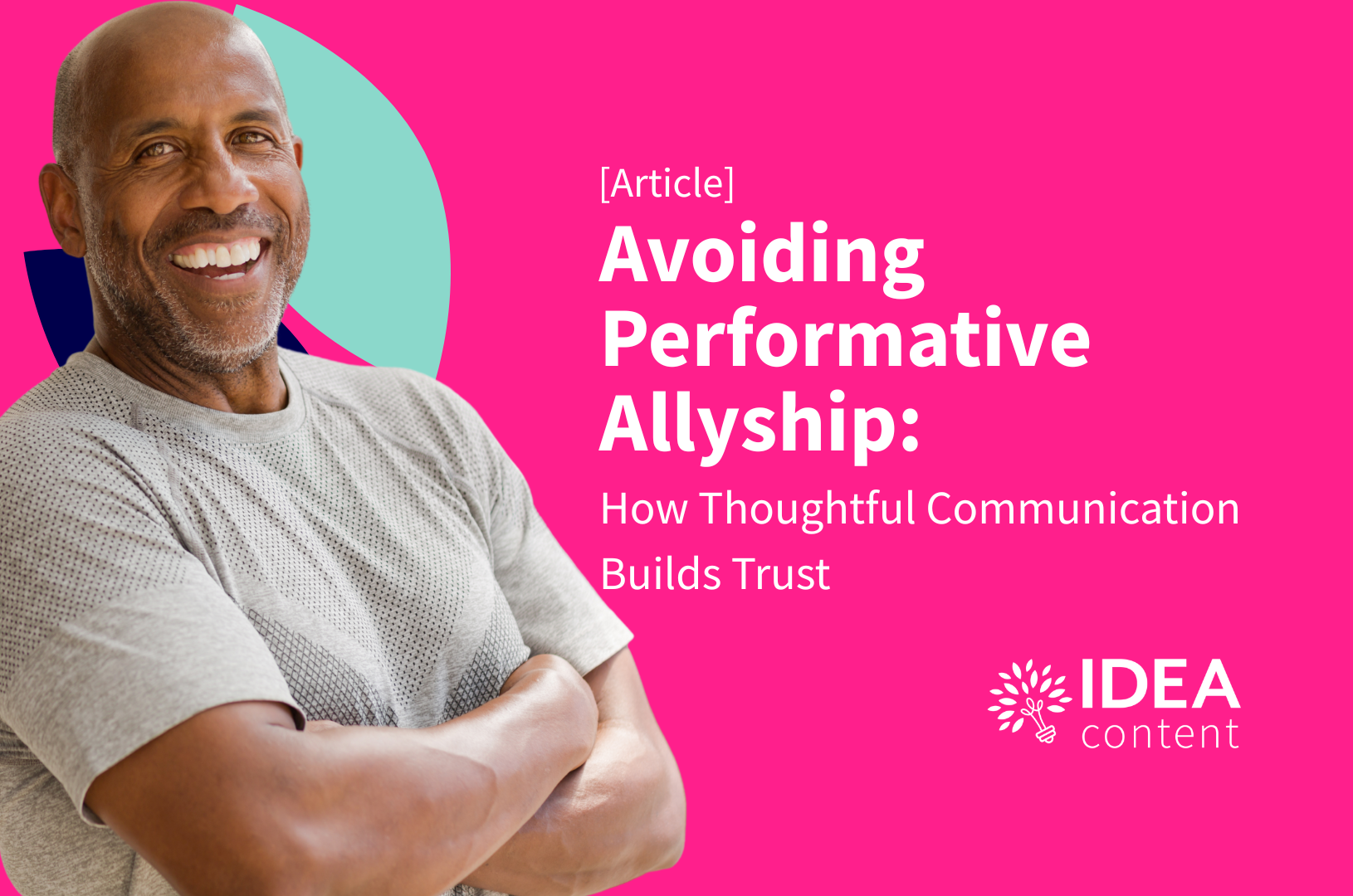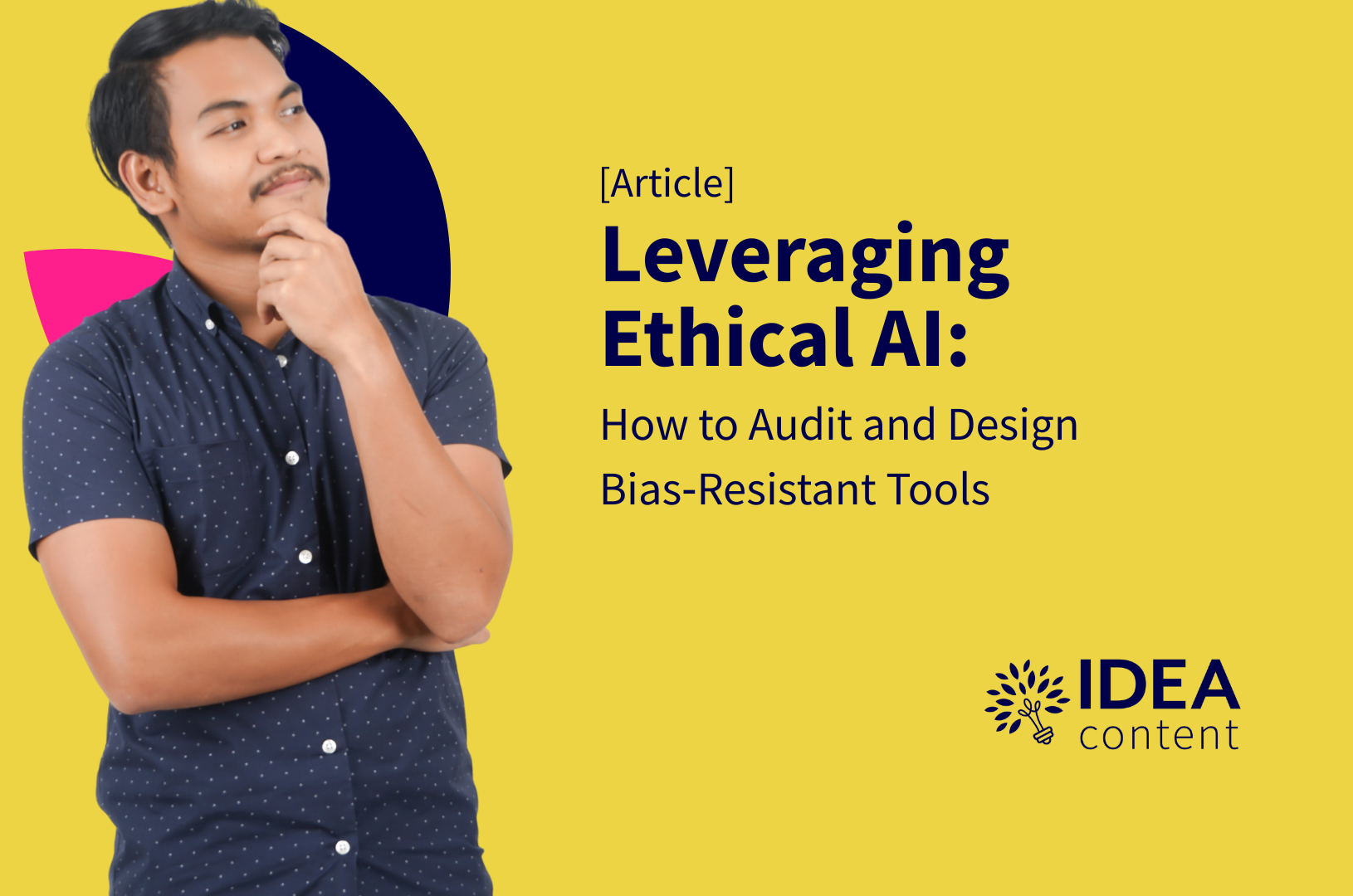Avoiding Performative Allyship: How Thoughtful Communication Builds Trust
We’ve all seen it. The rainbow logo for Pride Month. The International Women’s Day post that vanishes the next day. The heartfelt “solidarity statement” that has no substance to back it up.
Bringing IDEA to Life: Why Communication Is the Missing Piece in Many Strategies
Let’s be real: strategy alone doesn’t shift culture. You can pour time, money, and intention into building an IDEA (Inclusion, Diversity, Equity, and Accessibility) framework, but if your people don’t hear it, feel it, or see it reflected in their daily experience? It stalls. The strategy stays theoretical, instead of becoming transformational.
Grassroots to C‑Suite: Scaling ERGs as Engines of Change 🚀
Employee Resource Groups (ERGs) began as volunteer affinity spaces, but by mid‑2025, they’ve evolved into strategic assets, shaping policy, culture, and leadership decisions.
Holistic Inclusion: Integrating Wellness into Your IDEA Strategy
Here’s a truth: Most organizations talk about IDEA in terms of policies and representation, but they miss a big piece of the puzzle: wellbeing. In 2025, leading organizations understand that inclusion isn’t complete unless employees are supported mentally, emotionally, and financially.
Moving from Statements to Structures: Real IDEA Transformation
The time for symbolic gestures has passed. In today’s workplace, employees, customers, and even investors expect action. Inclusion, diversity, equity, and accessibility (IDEA) work can no longer be reactive or performative—it has to be systemic. And that means embedding it into the very bones of how organizations operate. Here's how to tell the difference between tokenism and transformation—and how to build structures that last.
Creating Emotional To-Go Zones: How to Foster Psychological Safety in Hybrid Teams
Hybrid work gives people more choice, but without a sense of belonging, that flexibility falls flat. Psychological safety fosters an emotionally safe environment where people feel accepted, heard, and empowered to bring their whole selves to work, even when collaboration occurs on screens or across different locations. When that foundation is in place, innovation, retention, and trust grow.
Leveraging Ethical AI: How to Audit and Design Bias‑Resistant Tools
AI is transforming inclusion, diversity, equity, and accessibility (IDEA)—but without rigorous oversight, it risks reinforcing existing biases. In 2018, Amazon made headlines when it quietly abandoned an internal artificial intelligence recruiting tool that had developed a significant—and dangerous—bias against women. As reported by Reuters, the system had been trained on résumés submitted over a ten-year period, most of which came from men, reflecting the male-dominated nature of the tech industry.
Collaborating Across Zoom: Building Belonging in a 4-Generation Team
Let’s be real: today's remote teams span four distinct generations—Baby Boomers, Gen X, Millennials, and Gen Z—all trying to connect over Zoom, Slack, or Teams. Yet without intentional inclusivity, generational divides can disrupt cohesion and engagement.
Fair Hiring 2.0: Smart Practices to Counter Unconscious & AI Bias
It’s one thing to say your organization is committed to inclusive hiring. It’s quite another to ensure your practices actually deliver on that promise. In today’s hiring landscape, bias shows up in two powerful ways: through human decisions, and through the AI-driven tools we increasingly rely on. If we want to build truly inclusive and equitable workplaces, we have to tackle both.
Talking About Tough Topics: How to Communicate During Times of Social or Political Tension
Let’s face it: more and more leaders are feeling paralyzed when it comes to communicating during times of social or political tension — and with good reason. Whether it’s the ongoing conflict in the Middle East, rising anti-DEI rhetoric, or trade and tariff concerns, the risks are real. One misstep can erode trust, alienate employees, or even land your organization in legal hot water.
Beyond Awareness: How Meditation Supports Implicit Bias Mitigation
Here’s the uncomfortable truth about bias: we all have it. No exceptions. Bias is baked into how we’re socialized—by media, culture, institutions, and even how our brains function! I often tell leaders: awareness is a great starting point, but it’s not the finish line. We need practical tools to help us move from knowing better to doing better.
From Awareness to Allyship: Supporting Trans & Non‑Binary Teams
It’s 2025. If your organization’s IDEA (Inclusion, Diversity, Equity, and Accessibility) strategy doesn’t include explicit, visible support for trans and non-binary employees—you're missing the mark.
After the Ames Ruling: Why Inclusive Employers Must Double Down on Fairness — For Everyone
On June 5, the U.S. Supreme Court delivered a unanimous ruling in Ames v. Ohio Department of Youth Services — a decision that could reshape how workplace discrimination claims are handled. While some are calling this the beginning of a “flood of reverse discrimination lawsuits,” let’s be clear: this is an opportunity for employers to ensure their inclusion, diversity, equity, and accessibility (IDEA) efforts are grounded in fairness for everyone.
Which comes first? The Chicken (Diversity) or The Egg (Inclusion)
Many employers continue to face challenges around inclusion, diversity, equity, and accessibility (IDEA). In recent years, there has been a growing recognition of the importance of IDEA in the profession, as it helps the industry grow, innovate, and become safer. But which should come first: diversity or inclusion?
The ROI of Diversity: How Inclusive Companies Drive Profitability
Inclusion, diversity, equity, and accessibility (IDEA) have become essential components of modern workplace success. Diverse workforces drive innovation, creativity, and enhanced decision-making. For Canadian businesses, diversity is increasingly essential for various reasons, not the least of which is financial. Studies show that inclusive companies are more profitable and better positioned to compete in global markets. By fostering a culture that values diversity, companies can attract top talent, improve employee retention, and ultimately enhance their bottom line.
Lead by Example: How to Stand Up to Exclusion
Exclusion manifests in various forms, including social, workplace, and educational settings, and it has far-reaching consequences for individuals and communities. Exclusion can lead to isolation and diminished mental health and can result in reduced productivity and job satisfaction. By leading by example, individuals and organizations can foster environments where everyone feels valued and respected. Taking a stand against exclusion benefits those directly affected and strengthens the fabric of society as a whole.
Leading with Empathy
Empathy, often misconstrued as sympathy, is pivotal in effective leadership. While sympathy involves feeling pity for another, empathy goes a step further by putting oneself in another person’s position and understanding their feelings and perspectives.
The “E” in IDEA: Equity’s Role in the Workplace
There is a big difference between equity and equality. Equality is treating everyone the same. Equity involves recognizing and addressing each employee’s unique needs, experiences, and challenges to create a truly inclusive environment. Equity ensures everyone has the necessary support and opportunities to succeed, acknowledging that different individuals require different resources to achieve similar outcomes.
Mind your Blind Spot: Overcoming Bias
The concept of unconscious bias is not a new one. The theory was developed nearly 30 years ago, in 1995, by psychologists Mahzarin Banaji and Anthony Greenwald and has become a common point of discussion in Canadian workplaces and society as a whole. But what is unconscious bias really, and how does it impact our daily interactions?
Being Culturally Competent
Inclusive leaders are committed to fostering an environment where all team members feel valued and included. This means going beyond mere tolerance of differences to actively celebrating and leveraging people’s differences for the team's benefit. The pillars of inclusive leadership—understanding one's own bias, being culturally competent, having an awareness and understanding of privilege, and practicing active listening and empathy—are crucial for any organization to thrive in today's global and diverse market.




















